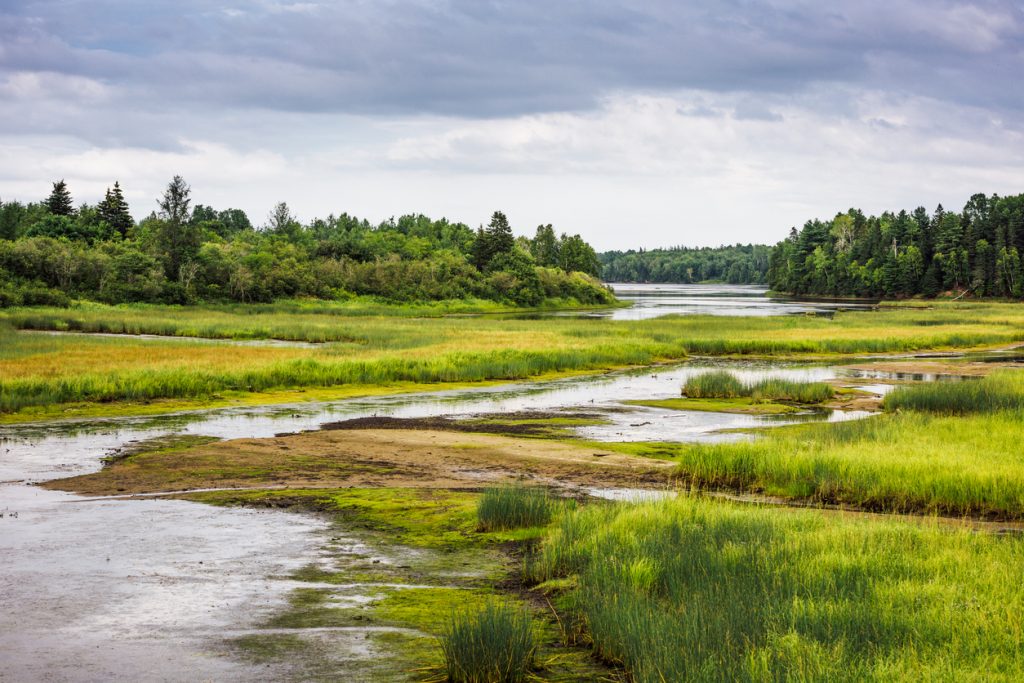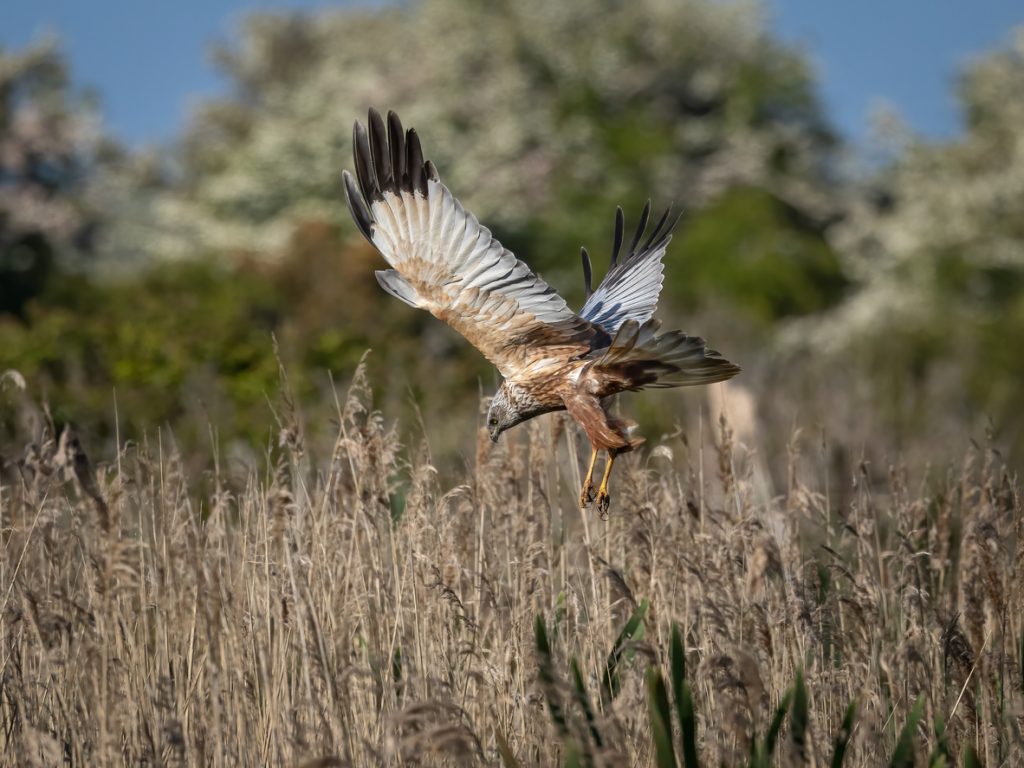Wetlands offer a rich system of plants and wildlife. Wetlands enhance water quality, control erosion, and mitigate the destruction of flood waters. They provide a home to at least one third of all threatened and endangered species. Shorebirds, raptors, wading birds and other waterfowl depend on wetlands. They serve as vital breeding and feeding grounds.
Wetlands may be permanently or seasonally flooded sites. A variety of native species thrive on wetland soils that can be both wet and dry.
Native grasses and sedges play a pivotal role in supporting these biodiverse habitats. These species provide essential food and cover for waterfowl and wetland wildlife.
Native Grasses Provide a Haven for Nesting and Roosting
Native grasses are the backbone of wetland habitats. They support waterfowl and shorebirds throughout their lives. One notable native grass species is Prairie Cordgrass (Spartina pectinata). This tall and robust grass native thrives in wetland environments. It’s upright leaf blades offer ideal nesting and roosting sites for wetland species.
Prairie Cordgrass provides an abundant food source in its nutritious seeds and roots. It is important for geese, ducks, and other waterfowl. It also provides them with cover and shade. Deer, graze on the young foliage.
Consider these native grasses to help sustain bird populations in your wetland environment:
- Prairie Cordgrass (Spartina pectinata)
- Big Bluestem (Andropogon gerardii)
Shop Native Grasses at Forrest Keeling
Sedges Support Wildlife and Biodiverse Wetland Ecosystems

Sedges provide food for birds like herons and egrets that eat their fruits, tubers, and shoots. These food sources are especially valuable during colder months.
Sedges are important to the health and stability of wetland areas. Their extensive root systems help stabilize shorelines and prevent erosion. They’re ideal for intermittent streams and marsh areas with fluctuating water levels.
Consider these sedges for your wetland project:
- Tussock Sedge (Carex stricta)
- Fox Sedge (Carex vulpinoidea)
- Palm Sedge (Carex muskingumensis)
Why Grasses and Sedges Are Crucial to Bird Populations

All wildlife needs an environment to feed, nest, and find safety from predators. Native grasses and sedges are fundamental to each of these critical aspects of life.
Explore Forrest Keeling’s Inventory of Native Grasses and Sedges
Natives Help Achieve Ecological Balance
Native grasses and sedges foster biodiversity and ecological balance in wetland habitats. These plants serve as primary producers. They create a foundation for insects and small animals which in turn feed waterfowl.
Find Grasses and Sedges for Wetland Projects at Forrest Keeling
Forrest Keeling grows the natives needed to cultivate and support thriving wetland ecosystems. They provide the foundational elements for biodiverse habitats and environmental sustainability.
Contact a Forrest Keeling team member for more information. We can help you turn any wetland site into a thriving habitat for bird and waterfowl populations.
Forrest Keeling… where the best trees begin!
